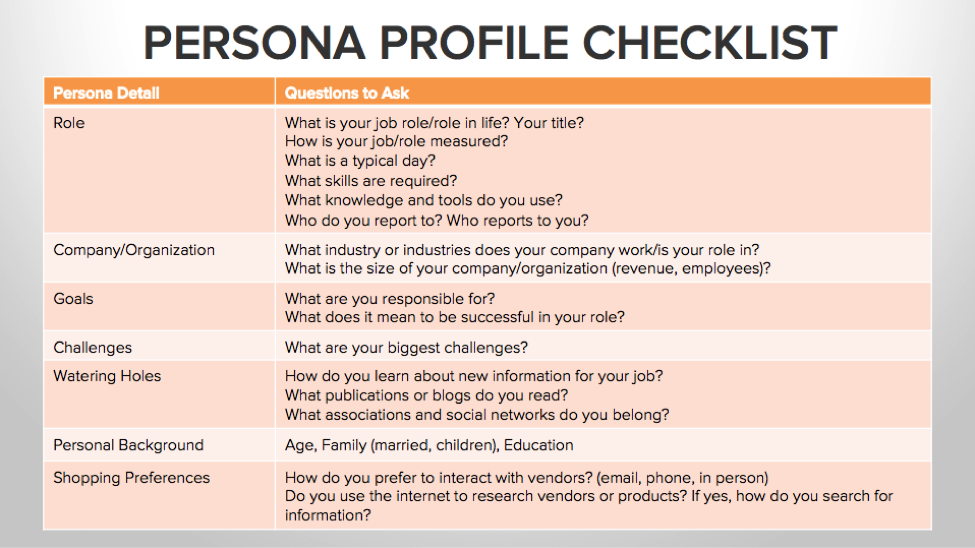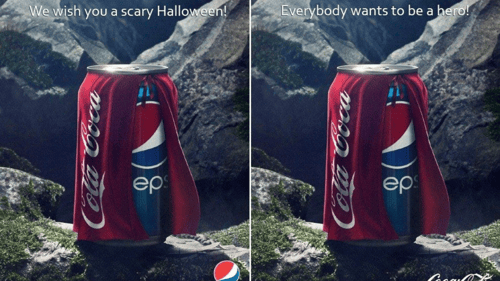5 step guide to setting up buyer personas for your marketing strategy
1.jpg)
Posted by Brendan McGinley
March 29th, 2017
Almost everyone has felt the bitter sting of not knowing what to say. Maybe you were on a first date or at an awkward networking event and you ended up standing, open-mouthed and agape.
It can happen with content too — even if you’ve been blogging for a while. Suddenly, you run out of things to say and you don’t know if your customers are even that interested in your content. The hard truth is that they might not be.
If you don’t have a buyer persona for your customer, chances are the content you’re creating isn’t right for them.
If you’re not sure content is that important for your business, you can see our previous post on why content marketing is crucial for your digital marketing strategy.
Search engines like Google are great at trying to match customers up with answers to their search queries. The internet is a dense mass of information with businesses and customers trying to wade through it all.
Thankfully the internet spiders do a great job (most of the time) at matching queries with relevant search results so that users get what they want.
As marketers, we create content for our customers. Realistically we can’t create content that every single person will want to see. No such content exists! Besides, that’s not what you want.
You want to create content that appeals to your target audience.
This is where using niche buyer personas plays a huge part. If you can identify with your customers and their pain points, you can help them to find solutions with content marketing.
First things first, what is a buyer persona?

A buyer persona is a semi-fictional representation of your ideal customer that goes far beyond demographics. Using your data and market research, you can create a persona of your ideal customer including demographics, what their day-to-day life looks like, where they get their information and how they respond to or interact with your product.
Having buyer personas allows you to identify with your customers and to market directly to them with inbound marketing techniques. A buyer persona is different to your target market in a number of ways. Your target market will focus mainly on the demographics along with pain points that your product or service will fix.
A buyer persona takes this and much more into consideration. A buyer persona creates a fictional character around the real customer information – and you can create content to engage with this character.
Your aim is to find out as much about them as possible using all the data you have available to you. You want to know any pain points or interests that they may share. Not just the ones that your product will fix but general issues that you as a brand can address and help them with when creating content for them.
This way you can identify the stage of the buyer's journey they are at and tailor content for each stage.
In order to draw up a detailed buyer persona, you need to ask yourself several questions.
1. Who is your ideal customer?
To create a buyer persona, you should first look at who your product/service is for. You already know your product or service so you know who it is designed for.
Use this information to begin to narrow down the demographics of who your buyer is. For example, you are not going to try and sell car insurance to people who don’t own a car.
2. Ask questions
The best way to get information on your buyers is to ask them. HubSpot has a great list of questions (below) which you can tailor to your customers. Surveys are a solid way of getting information from your customers too.
A lot of the time, you may find that customers are not very responsive to surveys and often don’t answer some or all of the questions.
If your product or service requires that your customers talk to your co-workers or employees either over the phone or in person, ask them about the issues or pain points the customers are facing.
All pretty familiar, right? Another way of gleaning data about your customer demographics is through social media. Any business profile on social media will have ‘insights’ and the ads dashboard where you can see more data on your customers.
The good thing about these dashboards is they are generally easy to navigate and hold a world of data for you to utilise.

3. Create content
This is where you get to really find out who your customers are and what affects them. Taking the above information, you can now start to create content that will relate to both them and your brand. You can create a sample buyer persona from your data with Hubspot.
Let’s look at an example.
Example Erin is aged 33 and a HR manager at a medium-sized agency with a team of 10. She uses Facebook, Twitter, LinkedIn and Instagram. Her main challenge in work is time-management for her team.
Using this information, you can begin content mapping, or creating content for her. Possible content would be around ways to monitor time management in a team, how to juggle working life and social life etc. which leads us to our next step.
4. Analyse your data
Now that you have created content specifically for your buyer persona, you can now see what they are interested in. The great thing about using content creation in your digital strategy is the tracking capabilities. These tracking capabilities allow businesses to see the content their customers are interacting with.
With content marketing, you can monitor what your persona interacts with most. Are they interested in longer or shorter articles or do they prefer graphics and videos? Do they spend a long time reading the full blog post or do they skim for information?
Where did she find your blog post? Was it from Facebook or LinkedIn? Does she look at other posts on your site and does she share or like your post on social media?
All of this data is great for building an idea of who Example Erin really is. You can begin to add more information about her pain points and what she finds useful. Remember that inbound marketing is all about gently enticing customers along the buyer’s journey in return for valuable information.

The important thing to learn from this data is the stage of the buyer’s journey that she is at and what she finds useful at each stage.
We can’t stress how beneficial it is to invest the time into getting to know your customers, their pain points and the media they interact with most. This means you can then create content your customers will want to interact with and ultimately make them happy whilst generating leads. Win-win!
5. Create multiple buyer personas
Once you have gathered all of this data, you will notice that there are some trends that exist beyond your main persona.
Taking note of these trends, you can then create a number of additional buyer persona. You can use the trends you have noticed from your analytics to formulate several more precise (and concise) personas.
Buyer personas will always need to be updated. You can do this for each of your personas as you learn more about them.
As they change, edit your content too! That way, you’ll have content for your buyer personas as they move along the funnel.
1.jpg)
Brendan McGinley

Previous Post
How voice search is the new frontier of content marketing
Next Post

How to use Facebook's Dynamic Product Ads (and 4 reasons why they take the biscuit)
Subscribe Here
You may also like...
Nicole Thomsen | Dec 11, 2023
Nicole Thomsen | Nov 6, 2023
Nadia Reckmann | Nov 2, 2023





